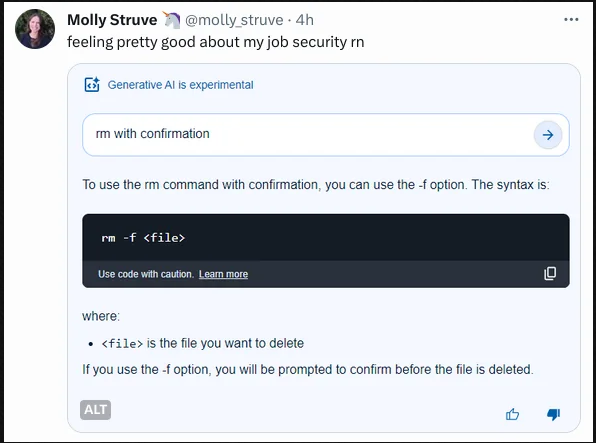this post was submitted on 09 Aug 2023
871 points (98.4% liked)
linuxmemes
20880 readers
5 users here now
I use Arch btw
Sister communities:
- LemmyMemes: Memes
- LemmyShitpost: Anything and everything goes.
- RISA: Star Trek memes and shitposts
Community rules
- Follow the site-wide rules and code of conduct
- Be civil
- Post Linux-related content
- No recent reposts
Please report posts and comments that break these rules!
founded 1 year ago
MODERATORS
you are viewing a single comment's thread
view the rest of the comments
view the rest of the comments

I’m very new to Linux; could you explain what this does for me?
-rmeans delete recursively.rmwill by default only remove files, but with this flag, it'll also delete all the folders, subfolders, and the files in those.--no-preserve-rootdisables a security check. A few years ago, this flag didn't exist. If you ranrm -r /, everything on your system would be deleted, provided the user had permissions. Now,/is treated specially andrmwill refuse to perform a recursive delete on it without the--no-preserve-rootflag.-fmeans force and disables any prompts.rm -rf --no-preserve-root /would delete every file on your system.Thank you! That’s funny and horrifying, as a complete newbie.
I installed Ubuntu on a spare computer a few weeks ago just to rm -rf / it. It was quite fun seeing the os slowly killing itself :)
You should try dd if=/dev/random of=/dev/sda some time :P
Should I ask what it does before or after I use it? :)
Fills the hard drive with randomly-generated garbage.
Specifically, most likely the OS hard drive, since that's usually sda
disables the wipe your system protection. Without this option rm can only wipe current directory if you input / as a location.
means force, will not prompt the user for any reason.
means recursive, rm will enter any directory selected and delete all the contents.
The above command WILL wipe your system. It will delete all files your user has access to, and it will give you no feedback warning you what's going on. Be careful.
Oh jeebus! Hahaha. Thank you so much for the explanation! I am extremely careful in terminal. I don’t find myself there often now that I’ve got my web apps set up.
Now to learn how to successfully install something using Docker… There’s so many VARIABLES in Portainer to get something installed! I have not had one success as of yet, but I’m only on my first week of learning. Got it running as a file server successfully, though!
Every TV in my house now gets King of the Hill RANDOMIZER and it’s bliss.